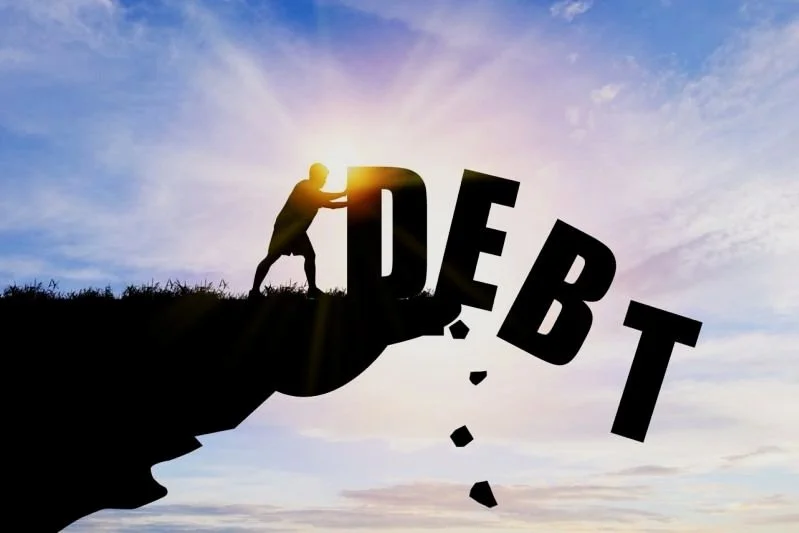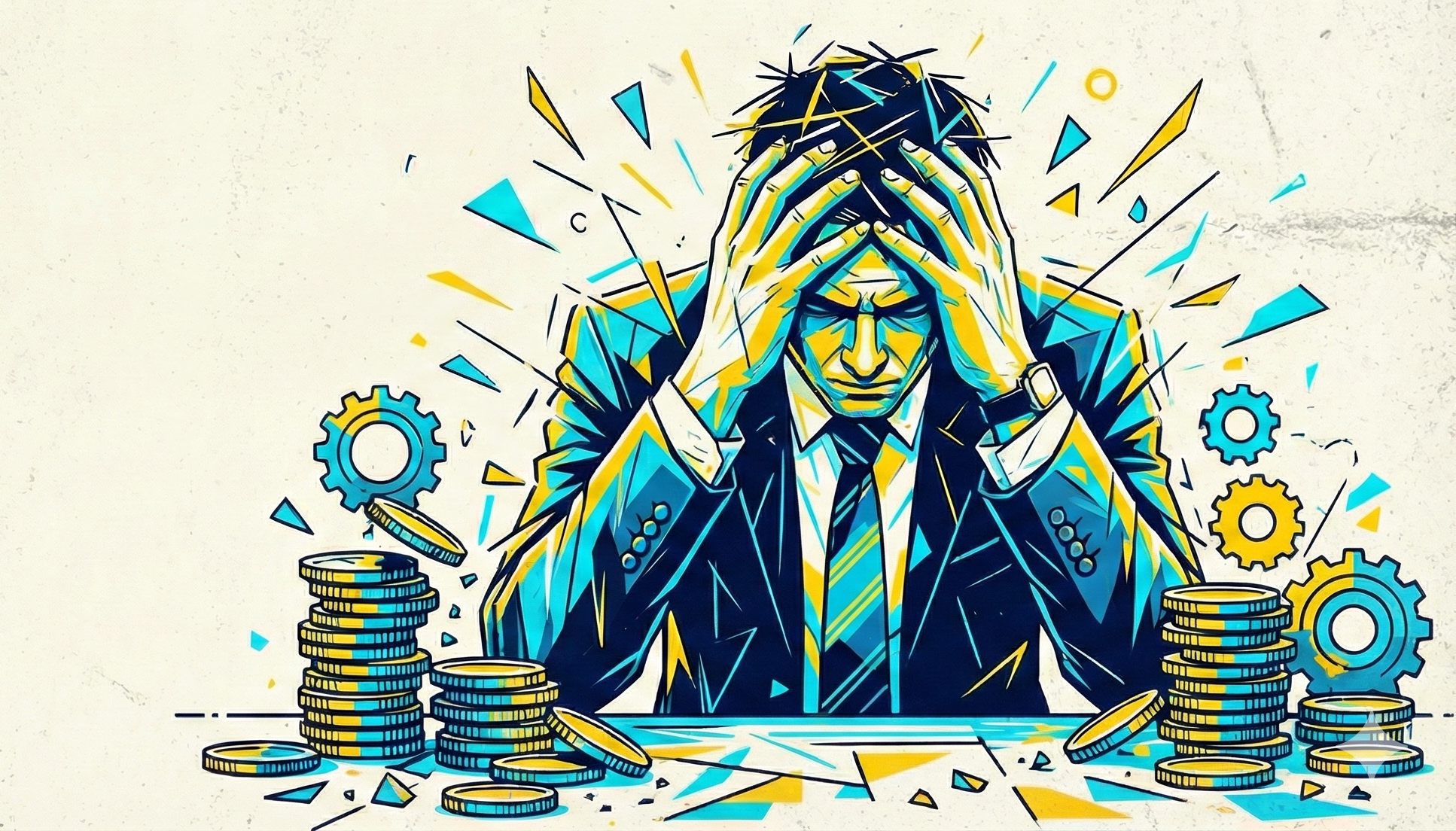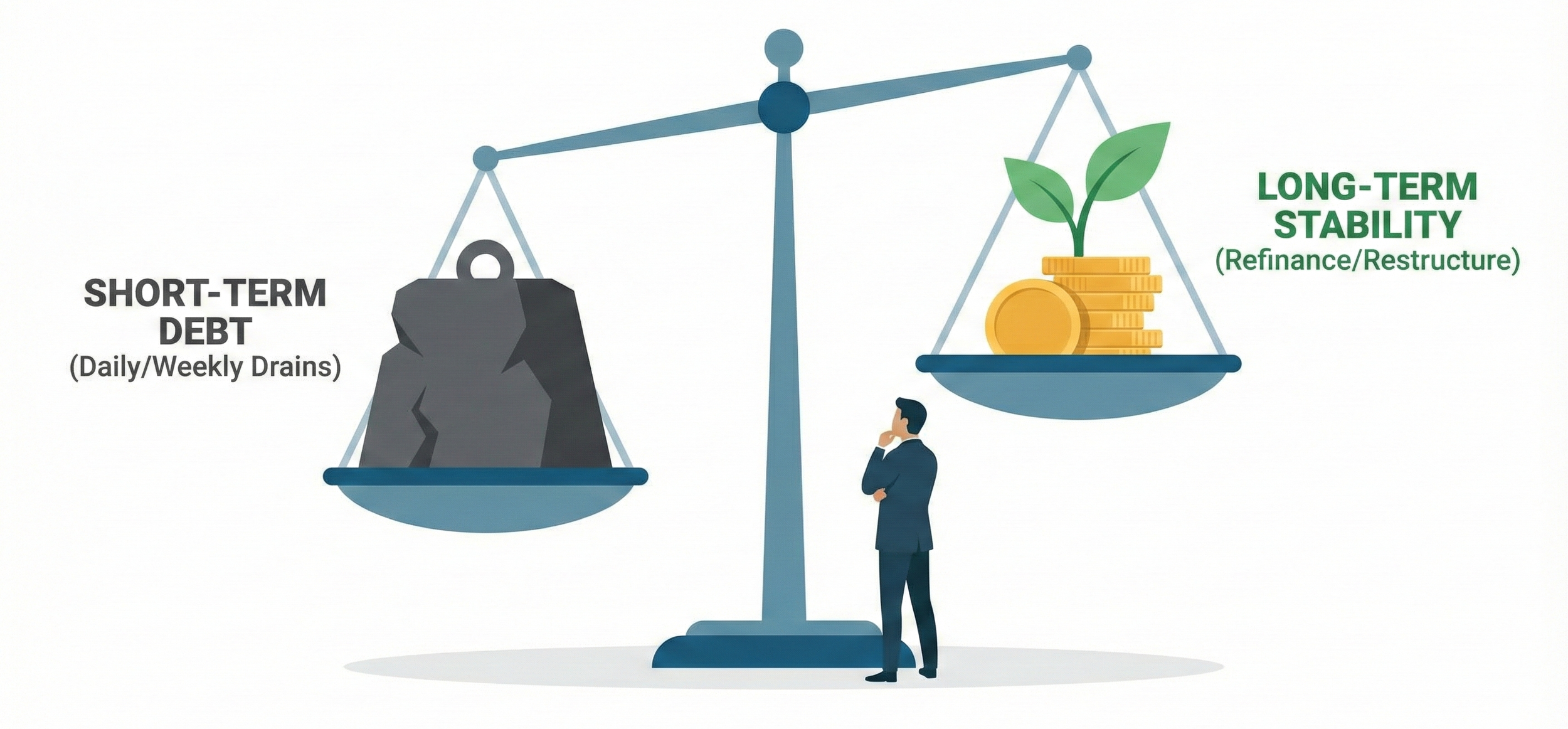“Signs That Business Debt is a Problem”
Business Debt is often an unavoidable part of running a business.
Whether it's a loan to get started, a line of credit to manage cash flow, or financing for new equipment, taking on business debt can be a valuable tool for growth and sustainability.
However, like any tool, it can become dangerous and harmful if not handled correctly.
Understanding when your business debt is transitioning from a helpful resource to a significant problem is crucial for the long-term health and survival of your enterprise.
This article will explore ten key signs that indicate your business debt might be spiraling out of control, providing small business owners with the knowledge to recognize these red flags and take proactive steps.
Recognizing these issues early can make all the difference in steering your business towards a more secure financial future.
Ignoring these signs can lead to increasing financial strain, hindering your ability to invest, grow, and even maintain daily operations.
Let’s delve into the indicators that suggest your business debt is becoming a cause for concern.
Sign 1: Difficulty Making Minimum Payments
One of the most immediate and obvious signs that your business debt is becoming a problem is a struggle to make the minimum required payments on your loans or credit lines.
This isn't just about occasionally being a few days late due to administrative oversight; it's a consistent pattern of scrambling for funds, prioritizing one payment over another, or dipping into personal savings to cover business obligations.
When your regular revenue stream isn't sufficient to meet your minimum debt obligations, it indicates a fundamental imbalance between your income and your liabilities.
This situation can quickly escalate.
Late payment fees add to your existing debt burden, and repeated missed payments can negatively impact your credit score, making it more difficult and expensive to secure financing in the future.
It can also trigger clauses in your loan agreements, potentially leading to demands for immediate repayment or other penalties.
If you find yourself constantly worried about having enough cash on hand to meet your minimum Business debt payments each month, it's a clear signal that your Business debt load is becoming unsustainable.
It's time to take a hard look at your expenses, revenue streams, and the overall amount of debt your business is carrying.
Addressing this issue promptly is vital to prevent more severe financial consequences down the line.
Ignoring this sign will only allow the problem to compound, making it increasingly challenging to regain financial stability.
Consider it an early warning system that demands immediate attention and a thorough review of your financial health.
Sign 2: Increasing Reliance on Credit for Operations
Businesses often use credit to manage short-term cash flow fluctuations or to invest in growth.
However, if you find your business increasingly relying on credit just to cover basic operating expenses like payroll, rent, or inventory, it's a significant red flag.
This suggests that your core business operations are not generating enough cash to sustain themselves, and you are essentially borrowing to stay afloat.
This creates a dangerous cycle where debt is used to fund expenses, leading to more debt, and further increasing your financial vulnerability.
This pattern indicates a deeper problem with your business model, pricing strategy, or expense management.
It might mean that your profit margins are too low, your overhead costs are too high, or your sales volume isn't sufficient.
Relying on credit for ongoing operations is not a sustainable long-term strategy.
It masks underlying issues and can quickly lead to a situation where your entire cash flow is consumed by debt repayments, leaving little room for growth or unexpected expenses.
If you're constantly reaching for your credit cards or tapping into your line of credit to meet everyday needs, it’s time to reassess your business fundamentals and develop a plan to generate sufficient cash flow from your core operations.
This might involve cutting costs, increasing prices, improving sales, or re-evaluating your business model altogether.
Sign 3: Difficulty Securing New Financing or Vendor Credit
When your business debt starts to become a problem, it often manifests in a reduced ability to access new credit.
Lenders and suppliers carefully evaluate your creditworthiness before extending financing or trade credit.
If your existing debt levels are high, your payment history is spotty, or your financial ratios appear unfavorable, they will likely view your business as a higher risk.
This can make it difficult to secure the funding you need for growth opportunities, to manage seasonal cash flow dips, or even to obtain favorable payment terms from your suppliers.
Being denied a loan or a credit line can be a stark indicator that your debt is perceived as a significant burden by external parties.
Similarly, if your vendors start shortening your payment terms or requiring cash on delivery, it could signal that they are concerned about your ability to pay your bills.
This restriction in access to credit can further strain your financial situation, limiting your flexibility and potentially hindering your ability to capitalize on opportunities or weather unexpected challenges.
If you find lenders and suppliers becoming hesitant to extend credit, it's a clear warning sign that your existing debt is negatively impacting your business's financial reputation and future prospects.
It's crucial to address the underlying debt issues to regain the trust of creditors and ensure continued access to necessary financing.
Sign 4: Increased Time Spent Managing Debt
As your business debt becomes more problematic, you might find yourself spending an increasing amount of time and mental energy just managing it.
This could involve constantly negotiating with creditors, tracking multiple loan payments, dealing with collection calls, or exploring debt consolidation options.
This preoccupation with debt management can detract from your ability to focus on core business activities like sales, marketing, innovation, and customer service.
When managing debt consumes a significant portion of your time and mental bandwidth, it's a sign that the business debt is no longer a passive financial tool but an active drain on your resources.
This constant juggling act can also lead to increased stress and anxiety, impacting your decision-making and overall well-being.
If you find yourself dreading opening your mail or answering the phone due to concerns about creditors, it’s a clear indication that your debt is becoming an overwhelming burden
Reclaiming your time and focus requires addressing the root causes of your business debt problems and developing a strategy to reduce your obligations and regain control of your financial future.
Sign 5: Using Short-Term Debt for Long-Term Assets
A fundamental principle of sound financial management is to match the term of your debt with the useful life of the asset you are financing.
Using short-term debt, such as credit cards or short-term loans, to finance long-term assets like equipment or property is a recipe for financial trouble.
Short-term Business debt typically comes with higher interest rates and shorter repayment periods, which can put significant strain on your Business cash flow when used to fund assets that will provide value over many years.
This mismatch creates a situation where you may be required to repay the debt before the asset has generated sufficient returns to cover the cost. It can also lead to a cycle of constantly refinancing short-term debt, incurring additional fees and potentially higher interest rates each time.
If you find yourself using credit cards to purchase equipment or pay other expenses, and relying on short-term loans to fund long-term investments, it’s a sign that your Business debt structure is not aligned with your asset base and could lead to significant financial pressure.
It’s essential to finance long-term assets with long-term debt that has repayment terms aligned with the asset's useful life to ensure sustainable cash flow and avoid unnecessary financial strain.
Sign 6: Deteriorating Key Financial Ratios
Analyzing your business's key financial ratios can provide valuable insights into the health of your debt situation. Several ratios can indicate if your debt is becoming problematic.
For instance, a rising business debt-to-equity ratio suggests that your business is relying more on debt than equity to finance its operations, increasing financial risk.
A declining interest coverage ratio, which measures your ability to cover interest expenses with your operating income, indicates that your debt burden is becoming more difficult to manage.
Similarly, a low current ratio or quick ratio, coupled with high debt levels, can signal a lack of short-term liquidity to meet your immediate obligations.
Monitoring these ratios regularly and understanding their trends can provide an objective assessment of your debt situation.
If you observe a consistent deterioration in these key metrics, particularly those related to leverage and liquidity, it's a strong indication that your business debt is becoming a problem and requires attention.
Understanding these ratios and seeking professional advice on their interpretation can help you proactively address potential debt issues before they escalate into a crisis.
Ignoring these signals from your financial statements can lead to a delayed understanding of the severity of your Business debt situation.
Sign 7: Increased Borrowing to Make Debt Payments
A dangerously clear sign that your business debt is spiraling out of control is when you start borrowing more money simply to make payments on your existing business debt or to cover business expenses such as payroll, vendor payments and other operating expenses.
This creates a vicious cycle where you are essentially digging yourself deeper into a financial hole.
This practice often involves taking out new loans or using balance transfers to cover payments on older debts.
While it might provide temporary relief, it ultimately increases your overall debt burden and the associated interest costs.
This behavior is unsustainable and indicates a fundamental inability to service your current Business debt obligations with your operating cash flow.
It's akin to robbing Peter to pay Paul and will eventually lead to a point where you run out of borrowing options or your debt becomes so overwhelming that it's impossible to manage.
If you find yourself resorting to taking on more debt just to keep up with your existing payments, it's a critical warning sign that your financial situation is dire and requires immediate and decisive action.
Seeking professional help to explore debt restructuring or other solutions is crucial at this stage.
Sign 8: Constant Pressure from Creditors
Dealing with occasional inquiries from creditors is a normal part of business.
However, if you find yourself under constant pressure from lenders, suppliers, or collection agencies due to overdue payments, it's a clear sign that your Business debt is a significant problem.
This pressure can manifest as frequent phone calls, emails, demand letters, or even legal threats.
This constant harassment can be incredibly stressful and disruptive to your business operations.
Persistent communication from creditors indicating past-due accounts signifies that you are consistently failing to meet your payment obligations.
This not only damages your relationship with your lenders and suppliers but can also lead to more severe consequences such as late payment fees, increased interest rates, damage to your credit score, and potentially legal action.
If you are spending a significant amount of time dealing with demanding creditors, it's a strong indicator that your debt is out of control and needs immediate attention to avoid further negative repercussions.
Developing a clear communication strategy with your creditors and exploring options for repayment plans or debt resolution is essential.
Sign 9: Inability to Invest in Growth Opportunities
A healthy business should have the financial flexibility to invest in opportunities that can drive future growth, such as new equipment, marketing campaigns, research and development, or expanding into new markets.
If your business is so burdened by debt that it lacks the capital to pursue these opportunities, it's a sign that your debt is hindering your potential for expansion and long-term success.
All available funds may be going towards servicing existing debt, leaving nothing for strategic investments.
This inability to invest can create a stagnant business, making it difficult to compete and adapt to changing market conditions.
While managing debt is important, it shouldn't come at the cost of sacrificing future growth prospects.
If you consistently have to pass up promising opportunities due to a lack of available funds caused by debt obligations, it's a clear indication that your debt load is too high and is impeding your business's progress.
Reassessing your business debt situation and exploring strategies to free up cash flow for strategic investments is crucial for the long-term viability and success of your business.
Sign 10: Personal Finances Becoming Entangled with Business Debt
For many small business owners, especially in the early stages, personal and business finances can become intertwined.
However, if you find yourself regularly using personal assets to cover business debts or relying on personal credit cards to fund business operations, it's a dangerous sign that your business debt is becoming a significant personal financial risk.
This blurring of lines can put your personal savings, home, and credit score in jeopardy if your business encounters financial difficulties.
While injecting personal funds into your business during tough times might seem like a solution, it can create significant long-term problems if it becomes a regular occurrence.
It can mask underlying business issues and put your personal financial well-being at risk.
If you are constantly transferring personal funds to your business to meet debt obligations or using personal credit to finance business expenses, it's a critical warning sign that your business debt is not sustainable and is having a direct negative impact on your personal finances.
Establishing clear boundaries between your personal and business finances and addressing the root causes of your business debt are essential to protect your personal financial security.
Taking Control of Your Business Debt
Recognizing these signs is the first step towards addressing potential problems with your business debt.
If you identify with several of these indicators, it's crucial to take proactive steps to regain control of your financial situation.
This might involve a thorough review of your income and expenses, exploring options for debt restructuring or consolidation, negotiating with creditors, developing a clear repayment plan, and potentially seeking professional financial advice.
Ignoring these warning signs can lead to more severe financial difficulties and potentially jeopardize the future of your business.
By understanding the indicators and taking timely action, you can steer your business towards a healthier and more sustainable financial path.
Remember that proactive management and seeking help when needed are signs of strength and essential for long-term business success.
WHAT IS THE BEST AND SAFEST WAY FOR YOUR BUSINESS TO DEAL WITH HIGH BUSINESS DEBT PAYMENTS?
It is NOT by stopping ACH payments.
It is NOT by taking on another business loan.
It is NOT ALWAYS a Refinancing
It is NOT by entering into a debt settlement program.
Find out the BEST strategies to get your Business back to where it was



















